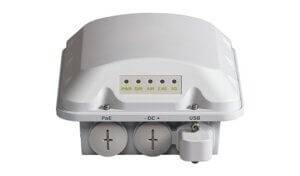Wifi consulting and engineering is a field that has become increasingly important in recent years. With the rise of remote work and the need for reliable internet access, businesses and individuals alike are turning to experts in the field to ensure that their wifi networks are up to par. Wifi consulting and engineering involves a range of services, from designing and implementing new networks to troubleshooting and optimizing existing ones.
One of the key benefits of wifi consulting and engineering is the ability to ensure that a network is reliable and secure. This can be especially important for businesses that rely on their wifi networks for day-to-day operations. A well-designed and maintained network can help to prevent downtime and ensure that employees are able to work efficiently. Additionally, wifi consulting and engineering can help to identify and address security vulnerabilities, protecting sensitive data from potential threats.
Overall, wifi consulting and engineering is an important field that plays a critical role in ensuring that businesses and individuals have access to reliable and secure wifi networks. With the help of experts in the field, it is possible to design, implement, and maintain networks that meet the needs of any organization or individual.
Fundamentals of Wi-Fi Technology
Wi-Fi, also known as wireless fidelity, is a technology that allows devices to connect to the internet or other networks wirelessly. This section will cover the basics of Wi-Fi technology, including its standards and protocols, frequency bands, signal propagation, and wireless network topologies.
Wi-Fi Standards and Protocols
Wi-Fi technology is based on a set of standards and protocols that define how devices communicate with each other wirelessly. The most common standards are 802.11a, 802.11b, 802.11g, 802.11n, 802.11ac, and 802.11ax. Each standard has its own specifications for data transfer rates, frequency bands, and signal modulation.
Frequency Bands and Signal Propagation
Wi-Fi devices operate on two frequency bands: 2.4 GHz and 5 GHz. The 2.4 GHz band has a longer range but is more susceptible to interference from other devices, while the 5 GHz band has a shorter range but offers faster data transfer rates and less interference.
Signal propagation is the way in which Wi-Fi signals travel from the transmitter to the receiver. Wi-Fi signals can be affected by obstacles such as walls, doors, and other materials. The strength of the signal decreases as it travels further from the transmitter.
Wireless Network Topologies
Wireless networks can be configured in different topologies, including point-to-point, point-to-multipoint, and mesh networks. In a point-to-point topology, two devices are connected directly to each other. In a point-to-multipoint topology, one device is connected to multiple devices. In a mesh network, multiple devices are connected to each other, creating a self-healing network that can withstand node failures.
In conclusion, understanding the fundamentals of Wi-Fi technology is essential for Wi-Fi consulting and engineering. It is important to consider the Wi-Fi standards and protocols, frequency bands, signal propagation, and wireless network topologies when designing and implementing Wi-Fi networks.
Wi-Fi Consulting Services
Businesses today require fast and reliable Wi-Fi networks to keep up with the demands of modern technology. Wi-Fi consulting services can help organizations design, implement, and manage wireless networks that meet their specific needs. These services can provide expert guidance on network design and architecture, site surveys and analysis, and security and compliance consulting.
Network Design and Architecture
Wi-Fi consulting services can help organizations design and architect wireless networks that meet their unique requirements. They can provide guidance on selecting the right hardware and software components, as well as help with network layout and topology. Consultants can also advise on how to optimize network performance, improve coverage, and ensure scalability.
Site Surveys and Analysis
Site surveys and analysis are critical components of any successful wireless network deployment. Wi-Fi consulting services can help organizations conduct site surveys to identify potential sources of interference and signal degradation. They can also analyze existing network infrastructure to identify areas for improvement and recommend solutions to optimize network performance.
Security and Compliance Consulting
Security and compliance are top priorities for any organization deploying a wireless network. Wi-Fi consulting services can provide guidance on how to secure wireless networks against unauthorized access, data breaches, and other threats. They can also advise on compliance with industry standards and regulations, such as the Payment Card Industry Data Security Standard (PCI DSS) and the Health Insurance Portability and Accountability Act (HIPAA).
In conclusion, Wi-Fi consulting services can provide expert guidance on network design and architecture, site surveys and analysis, and security and compliance consulting. By leveraging the expertise of Wi-Fi consultants, organizations can deploy wireless networks that meet their specific needs, while ensuring optimal performance, coverage, and security.
Wi-Fi Engineering Solutions
Wi-Fi engineering solutions are designed to provide businesses with a fast, reliable, and secure wireless network. These solutions can be tailored to meet the specific needs of a business, whether it’s a small office or a large enterprise.
Custom Wi-Fi Hardware Development
Custom Wi-Fi hardware development is an important aspect of Wi-Fi engineering solutions. This involves the design and development of wireless access points, routers, and other hardware components that are specifically tailored to meet the needs of a business. With custom hardware, businesses can ensure that their wireless network is optimized for their specific requirements.
Software Solutions for Wi-Fi Networks
In addition to custom hardware development, software solutions are also an important part of Wi-Fi engineering solutions. These solutions are designed to provide businesses with the tools they need to manage and monitor their wireless network. This includes software for network management, security, and performance optimization.
Integration with Existing Infrastructure
Wi-Fi engineering solutions are designed to integrate seamlessly with a business’s existing infrastructure. This includes integrating with existing network infrastructure, such as switches and routers, as well as integrating with other business systems, such as security systems and access control systems.
Overall, Wi-Fi engineering solutions provide businesses with a fast, reliable, and secure wireless network that is tailored to their specific needs. With custom hardware development, software solutions, and seamless integration with existing infrastructure, businesses can ensure that their wireless network is optimized for their specific requirements.
Project Management in Wi-Fi Deployments
Deploying a Wi-Fi network requires careful planning, execution, and ongoing optimization. Project management is essential to ensure that the deployment is successful and meets the client’s requirements. This section will discuss the three main phases of project management in Wi-Fi deployments: planning and strategy, implementation and execution, and monitoring and optimization.
Planning and Strategy
In the planning and strategy phase, the project manager works with the client to identify their requirements and goals for the Wi-Fi deployment. This includes identifying the number of users, devices, and applications that will be using the network, as well as the coverage area and performance requirements. The project manager will also assess the existing network infrastructure and determine if any upgrades or modifications are required.
Once the requirements have been identified, the project manager will develop a detailed project plan that includes timelines, milestones, and deliverables. The project plan will also outline the roles and responsibilities of the project team and the client.
Implementation and Execution
The implementation and execution phase is where the project plan is put into action. The project manager is responsible for coordinating the installation of the Wi-Fi equipment, configuring the network, and testing the network to ensure that it meets the client’s requirements. The project manager will also oversee the training of the client’s staff on how to use the network.
During this phase, the project manager will also manage any issues or challenges that arise. This includes identifying and resolving any technical issues, as well as managing any changes to the project scope or timeline.
Monitoring and Optimization
The monitoring and optimization phase is where the project manager ensures that the Wi-Fi network is performing as expected. The project manager will monitor the network performance and identify any issues that arise. They will also analyze the network usage data to identify areas where the network can be optimized to improve performance or reduce costs.
The project manager will work with the client to implement any changes required to optimize the network. This may include adding or removing access points, adjusting the network configuration, or upgrading the network infrastructure.
In conclusion, project management is essential to the success of a Wi-Fi deployment. By following a structured approach to planning, implementation, and optimization, the project manager can ensure that the client’s requirements are met, and the Wi-Fi network performs as expected.
Emerging Trends in Wi-Fi Technology
Wi-Fi technology has come a long way since its inception, and it continues to evolve rapidly. Here are some emerging trends in Wi-Fi technology that are worth keeping an eye on.
Wi-Fi 6 and Beyond
Wi-Fi 6, also known as 802.11ax, is the latest Wi-Fi standard that promises faster speeds, lower latency, and better performance in crowded areas. It achieves this by using technologies like MU-MIMO (multi-user multiple input and multiple output), OFDMA (orthogonal frequency-division multiple access), and BSS Coloring (basic service set coloring). Wi-Fi 6 is already being adopted by many device manufacturers, and it is expected to become the new norm in the coming years.
Beyond Wi-Fi 6, there are already talks of Wi-Fi 7, which is expected to bring even faster speeds and better performance. Wi-Fi 7 is still in the early stages of development, but it is expected to use technologies like THz (terahertz) frequency bands, MIMO (multiple input multiple output) antennas, and more.
IoT and Wi-Fi Convergence
The Internet of Things (IoT) is a rapidly growing industry that is expected to connect billions of devices to the internet. Wi-Fi is one of the primary technologies that will be used to connect these devices, and there are already efforts to improve the convergence of Wi-Fi and IoT.
One of the emerging trends in this area is Wi-Fi HaLow, which is a low-power, long-range Wi-Fi standard that is designed specifically for IoT devices. Wi-Fi HaLow uses the 900 MHz frequency band, which is less crowded than the traditional 2.4 GHz and 5 GHz bands used by Wi-Fi.
Advancements in Wi-Fi Security
As Wi-Fi becomes more pervasive, the need for better security becomes more important. Wi-Fi security has come a long way since the days of WEP (Wired Equivalent Privacy), and there are now several emerging trends in this area.
One of the most significant advancements in Wi-Fi security is the introduction of WPA3 (Wi-Fi Protected Access 3), which is the latest security protocol for Wi-Fi networks. WPA3 uses stronger encryption algorithms than its predecessor, WPA2, and it also introduces new security features like Simultaneous Authentication of Equals (SAE) and Opportunistic Wireless Encryption (OWE).
In conclusion, Wi-Fi technology is constantly evolving, and these emerging trends are just a few examples of what we can expect in the coming years. As a Wi-Fi consultant or engineer, it is important to stay up-to-date with these trends to provide the best possible service to clients.
Case Studies and Best Practices.
Troubleshooting Common Wi-Fi Issues
One of the most common issues with Wi-Fi networks is poor signal strength. This can be caused by a variety of factors, including distance from the router, interference from other devices, and obstructions such as walls or furniture. To troubleshoot this issue, Wi-Fi consulting and engineering firms may perform a site survey to identify areas with weak signal strength and recommend solutions such as adding access points or relocating the router.
Another common issue is network congestion, which can slow down the entire network and cause connectivity issues. To address this issue, Wi-Fi consulting and engineering firms may recommend implementing Quality of Service (QoS) policies to prioritize certain types of traffic, such as video conferencing or VoIP calls.
Innovative Wi-Fi Applications
Wi-Fi networks are not just for internet access. Wi-Fi consulting and engineering firms have helped businesses and organizations implement innovative Wi-Fi applications, such as using Wi-Fi for asset tracking in warehouses or using Wi-Fi to monitor equipment in manufacturing plants.
In the healthcare industry, Wi-Fi is being used for patient monitoring and tracking, as well as for telemedicine applications.
Overall, Wi-Fi consulting and engineering firms can provide valuable expertise and solutions to businesses and organizations looking to improve their wireless networks. By sharing success stories, troubleshooting common issues, and exploring innovative applications, these firms can help their clients stay connected and competitive in today’s digital world.





